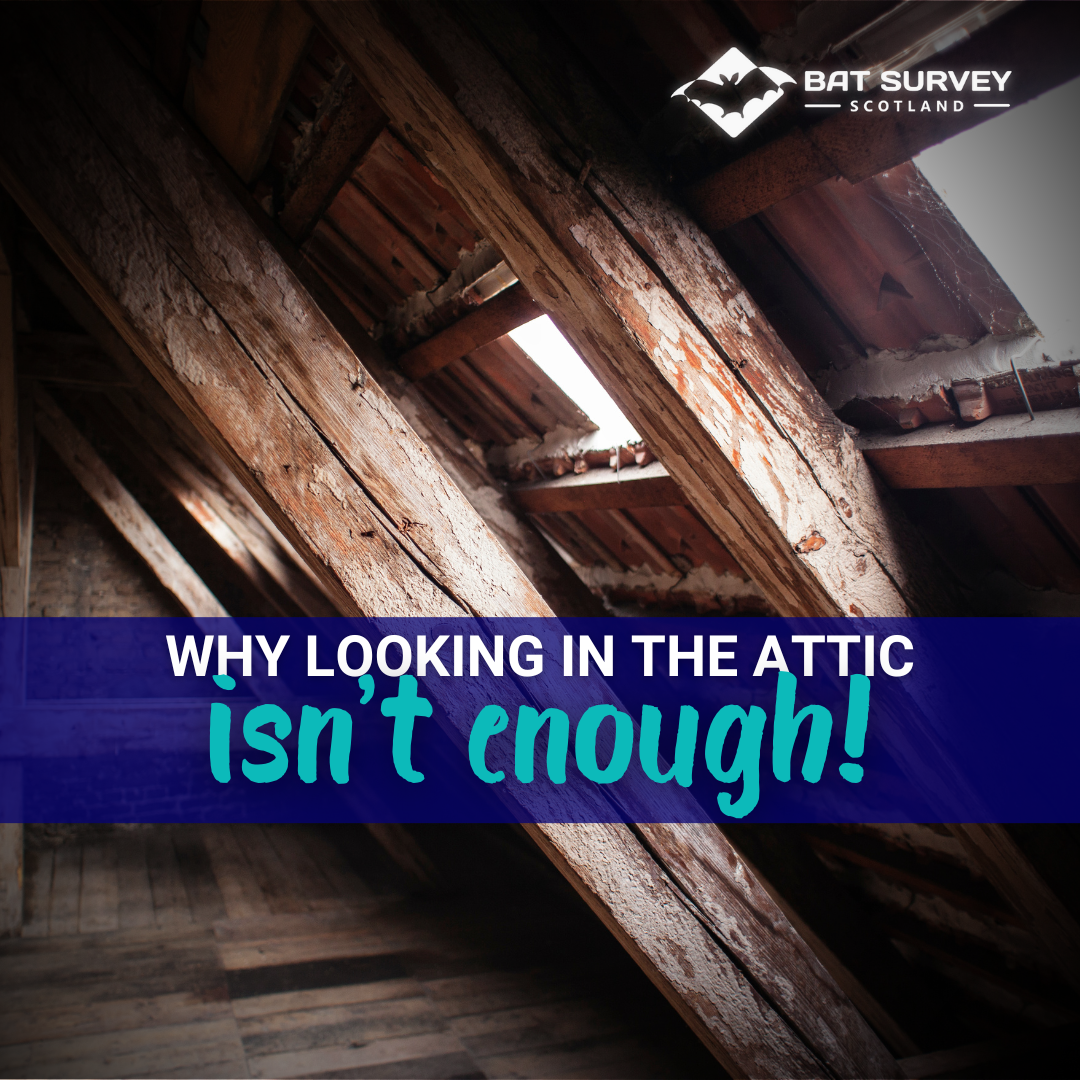What will your bat survey find?
To help you prepare for your survey findings we’ve looked at our previous surveys at 133 sites, split into rural and urban/suburban locations. Let’s start by looking at the surveys you might need…
Which surveys are you likely to need?
Bat surveys take place in two stages:
Stage 1 - Preliminary Roost Assessment
This is a day-time physical inspection, looking for both evidence of roosting bats and structures that have the potential to contain roosts. It also considers the surrounding habitat and whether bats have been recorded in the area.
The level of suitability for bat roosts is assessed, and this determines if a stage 2 survey is needed.
Stage 2 - Bat Activity Surveys
This is a night-time survey with a team of skilled surveyors using ultrasound bat detectors and infra-red video to identify bats leaving or entering roost features. Depending on the potential for bat roosts determined in the stage 1 survey, this may need to be repeated several times.
These can be a mix of sunset and sunrise surveys to allow a full picture of roosting activities on your property.
42% of urban/suburban sites needed both stage 1 and stage 2 bat surveys. This figure was double for rural sites, due to better bat habitat and often older buildings with more roosting opportunities.
What might your surveys find?
For urban and suburban properties:
31% had no roosts confirmed at stage 1. Each of these buildings had negligible roosting potential, so we were able to confirm there were no bats present after just a daytime visit.
53% had no roosts confirmed at stage 2. These sites had enough roosting potential to need both stage 1 and stage 2 surveys. When the stage 2 surveys were completed no bats were seen leaving or entering the building.
16% had bat roosts that could be handled under our Bat Low Impact Licence (BLIMP). BLIMP licensing applies to non-breeding roosts of our two most common bat species (common and soprano pipistrelles), and allow us to quickly and flexibly manage the impacts of your development or renovation on bats roosting.
For all urban and suburban sites with bat roosts, we could progress quickly under our Bat Low Impact Licence (BLIMP)!
For rural properties:
•At rural sites 58% of buildings contained roosts. Most could be addressed under a low impact license, but 17% had roosts that required full licensing, due to the presence of rarer species or hibernation or maternity roosts. Full licenses are usually slower to obtain and may have seasonal restrictions and more complex mitigation.
24% had no roosts confirmed at stage 1. Each of these buildings had negligible roosting potential, so we were able to confirm there were no bats present after just a daytime visit.
18% had no roosts confirmed at stage 2. These sites had enough roosting potential to need both stage 1 and stage 2 surveys. When the stage 2 surveys were completed no bats were seen leaving or entering the building.
41% had bat roosts that could be handled under our Bat Low Impact Licence (BLIMP). BLIMP licensing applies to non-breeding roosts of our two most common bat species (common and soprano pipistrelles), and allow us to quickly and flexibly manage the impacts of your development or renovation on bats roosting.
17% of sites had roosts requiring a full license from NatureScot (or Natural England). After receiving the license all of these sites were able to proceed with their proposed works with pragmatic and budget-appropriate mitigation strategies in place.
How we help you with your survey findings…
For all of the sites we survey and all of the works we support, your goals are our priority. Bats are protected by law, and we are here to help you comply with and navigate the legislation so you can complete your project with no additional headaches. When we work with you we will…
✓ Provide jargon-free reports so you know exactly what we’ve found,
✓ Give clear recommendations to make it as easy as possible to take your next steps towards completing your project,
✓ Work with you so any required mitigation is pragmatic and fits with the aims of your proposed works.
If you need a bat survey (or think you might) get in touch with our team of specialist ecologists!
Or read more of our latest blogs here:






